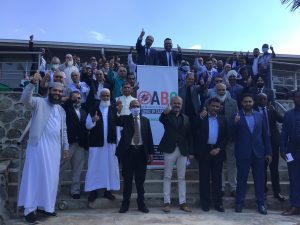
By Duncan Mlanjira
After conducting an intensive research and investigation of Malawi’s historical records, concerned citizen, Yamikani Nicholas Kachingwe is advocating that the Government should initiate a Bill in Parliament to officially recognize and accept Indians as Malawi’s 11th ethnic tribe.
The 35-year-old Kachingwe, who has great interest in current affairs, news and storytelling, is running the campaign through the website www.currentaffairsmalawi, appealing and suggesting to all relevant authorities in Malawi to seriously consider the request.

Yamikani Nicholas Kachingwe
He says according to his research, Malawi has 8 main ethnic groups and 1 minority groups that comprises Indians and mixed races.
These ethnic tribal groups are the Chewa; Lhomwe; Yao; Ngoni; Tumbuka; Nyanja; Ngonde Hamba; Sena; Mang’anja and the minority ethnic groups comprises Indians, mixed race and Europeans, who constitute 2% of the population.
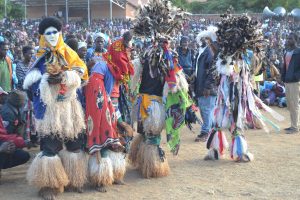
Chewa culture
He chronicles the tribes and ethnic groups as follows:
Chewa Tribe are remnants of Maravi people, originally from Malabo, Zaire (now called Democratic Republic of Congo) and came to Malawi in the 16th Century. Their well-known clans are Banda and Phiri and they constitute 36% of the Malawi population.
The Lhomwes originally came from Mozambique between 16th-17th Century and constitutes 18% of the population.
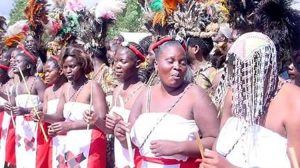
The Lhomwes
The Yao tribe is originally from Mozambique and Tanzania. By 14th-15th century, they were arleady in Malawi and they constitute 14% of the population.
The Ngonis are originally from South Africa, from the clans of Zulu and Nguni and constitute 12% of the population.
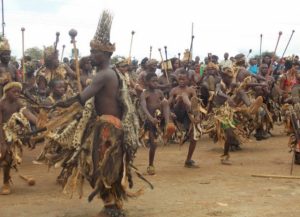
Ngoni culture
The Tumbukas are originally from southern Tanzania and eastern Zambia and constitute 9% of the population.
The Nyanja, popularly known as Tonga and commonly found in Northern Region of Malawi, constitute 2% of the population.
Then there is the Ngonde Hamba, which — according to Kachingwe’s research — are the least populated ethnic groups with 1% constituting of the population.
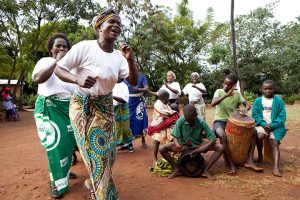
Sena culture
The Sena tribe is an ethnic group, with origins in northwestern region of Mozambique in Tete Province, Manica Province, Sofala Province and Zambezi Province. They are also found in Malawi and Zimbabwe near their respective borders with Mozambique.
The Mang’anja are a Bantu people of central and southern Africa, particularly around Chikwawa in the Shire River valley of southern Malawi. They speak a dialect of the Nyanja language and are a branch of the Amaravi people.
“With this information, we can all agree that Malawi is a great nation made up of different tribes, most of which came from other countries and made Malawi their home,” opines Kachingwe.
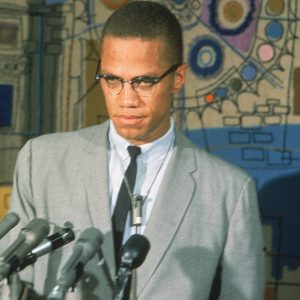
Malcolm X
He goes on to quote African-American civil rights activist, Malcolm X who said: “I am not a racist. I am against every form of racism and segregation, every form of discrimination. I believe in human beings, and that all human beings should be respected as such, regardless of their color.”
Kachingwe goes on to say: “According to historical facts about Malawians of Indian origin, the first Indian settler was Adam Osman who emigrated to Malawi in 1885.
“He first settled in Nsanje. After him many other Indian immigrants followed suit.
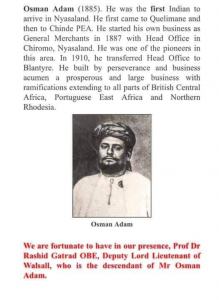
“In 1963, for the first time before our independence on 6th July 1964, Abdul Sattar Sacranie was appointed as the first Indian Mayor of Blantyre and served till 1967.
“He was a personal legal advisor to the first Malawian Prime Minister and President, late Ngwazi Dr. Hastings Kamuzu Banda. His legal firm is still in existence — the Sacranie & Gow.”
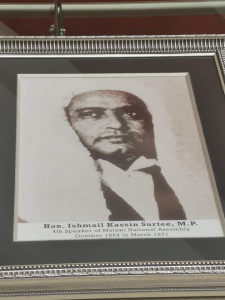
Kachingwe also dug out that the country have had many other popular politicians such as late Honourable Ishmael Kassin Surtee, who was
the first Indian and 4th Speaker of Malawi Parliament after Independence — served from October 1964 to 1971.
“We have had Indian traditional chiefs, politicians, ward councilors, bishops, teachers and many other professionals.
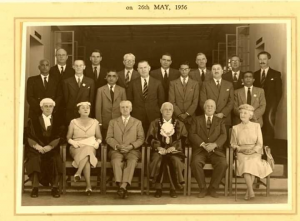
Sacranie on second row, third from right
“The Nyasaland Indian Association was registered and established on 14th September 1922. On 19th August, 1938 they held their reunion meeting with approval and authority from many Indian organizations such as Indian chamber of commerce, Nyasaland Indian Traders association, Indian Sports Club, Goan Social Club and the Oriental Club.”
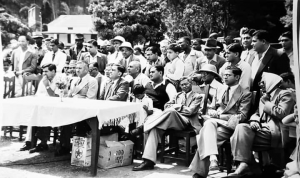
Nyasaland Indian Association commitee
members
The meeting of 94 members most of whom were wholesale traders, included Sikhs, Hindus and Muslims was chaired by late M.G. Dharap chaired the meeting and the elected members to run its affairs were M.G Dharap, C.K. Raman, A.M. Ravel, N.M. Suvama, Hussein Ahmed, S.O. Sacranie, M.G. Menon, H.S. Dias, Haridas Amarsi, P. Dayaram and Dr Hazuh Singh — according to the records.
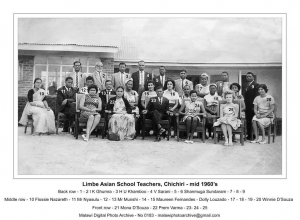
“The first Indian primary school was opened in 1940 at Songani, 10 miles from Zomba and in 1943 a second was opened in Limbe, financed by Suliman Sacranie, Omar Hassam Janmehammed and some funds from South African Indians.
“There was no secondary school for Indians until 1959,” Kachingwe says.
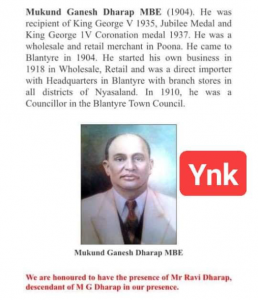
Fast forwarding to current day, as of December 2016, over 8,000 persons of Indian origin reside in Malawi with most of them of Gujarati origin. By 2020, the population number has tripled or even beyond.
“With such humbling relationship between India and Malawi plus the history of Indian immigrants in Malawi, who have 3rd and 4th generations still living in Malawi, I am proposing to the Government of Malawi to consider to initiate a Bill in Parliament to approve and allow Indians to be recognized as a tribe of Malawi,” Kachingwe says in conclusion.
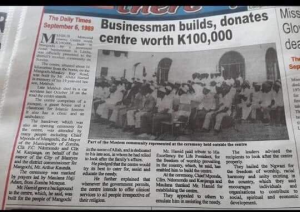
“Their selfless efforts and patriotism helped to built and develop Malawi; Indians fought for the freedom of Malawians before and after Independence and they continue to stand tall for the dignity of Malawi and Malawians till now.
“Come to think of it; Central High School, Mount View Primary School were founded by Hassam Khamboo and Mrs Sacranie with great help from Indian community.
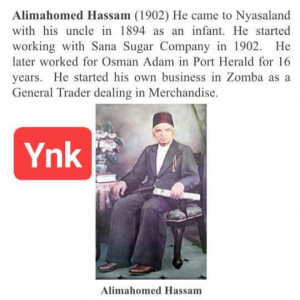
“Dharap Primary School in Blantyre [now called Namiwawa along the Presidential Drive to Sanjika Palace] and Livimbo Primary School in Lilongwe were built by Indians.
“Our neighboring countries have arleady started to recognize and embracing them as a tribe.
“President Uhuru Kenyatta’s Kenyan government announced on July 22, 2017, that the Asian community would be officially recognised as the 44th tribe in Kenya — recognising the community’s contribution to Kenya from the dawn of the nation.
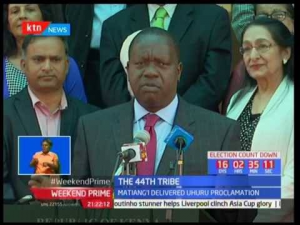
The case in Kenya
“Then what can fail us? We are the Warm Heart of Africa and our history cannot start or be told without mentioning the Indian forefathers.
“Imagine the young Indian children who were born in 60’s till now, who were raised and educated in Malawi; got married and are now working towards contributing to the nation through taxes and in many other ways.

Coronavirus alert
“Most of them are now holders of Malawi National Identity Cards as well Malawi Passport holders and they have only known Malawi as their home country and yet today they are deemed as foreigners.
“It is now time and proper that they be constitutionally recognized as a tribe of Malawi,” says Kachingwe in the appeal.
